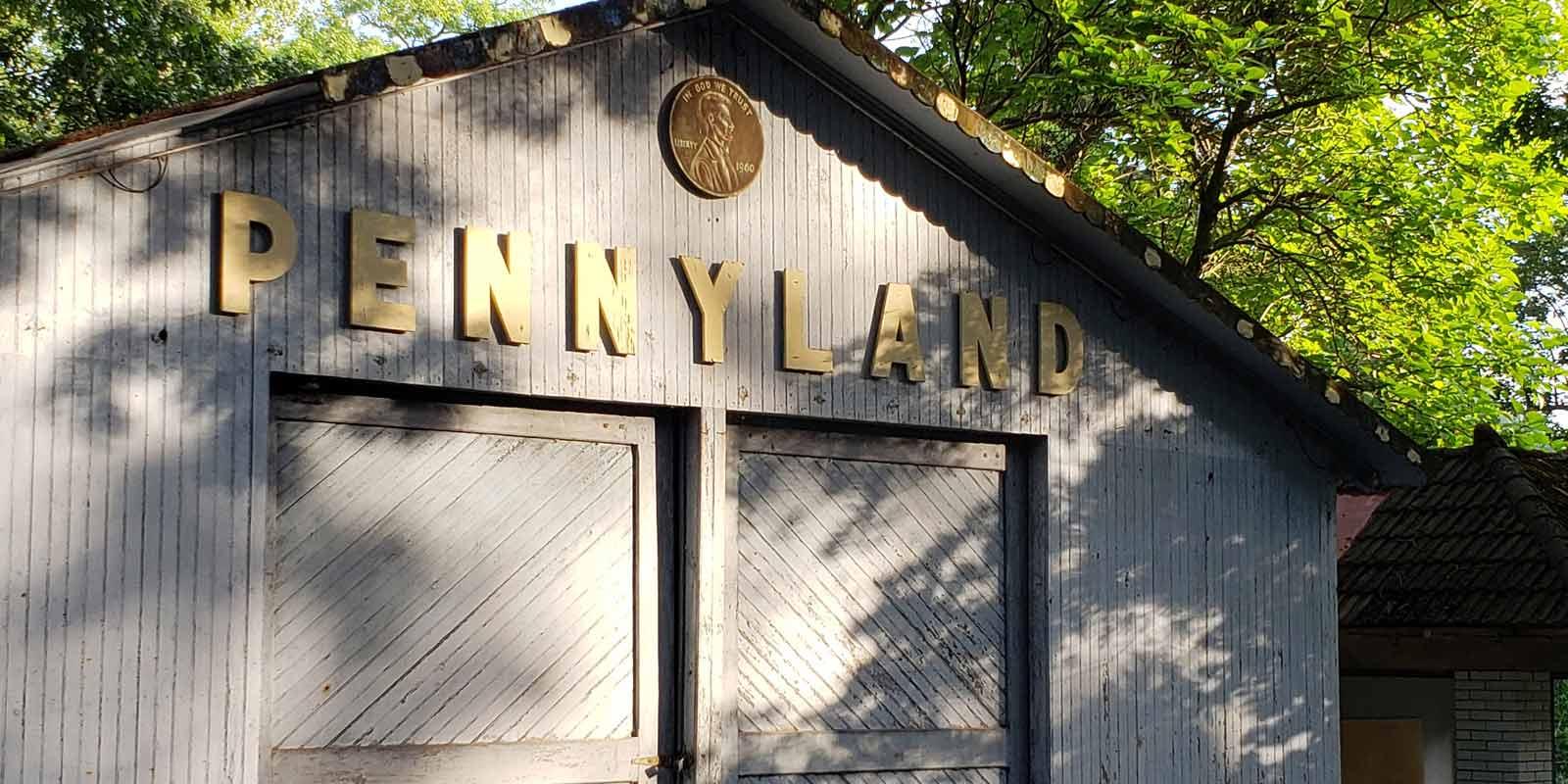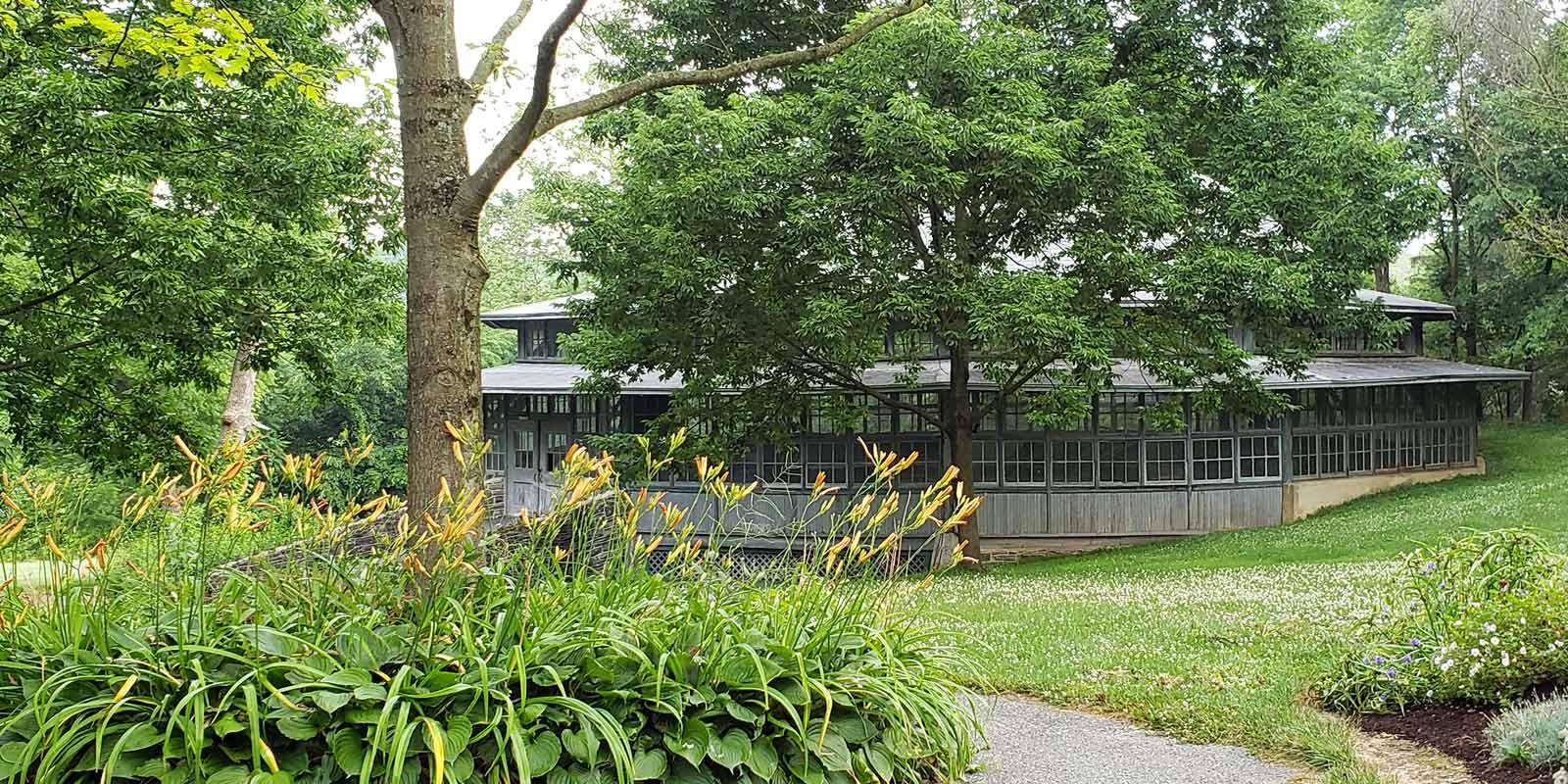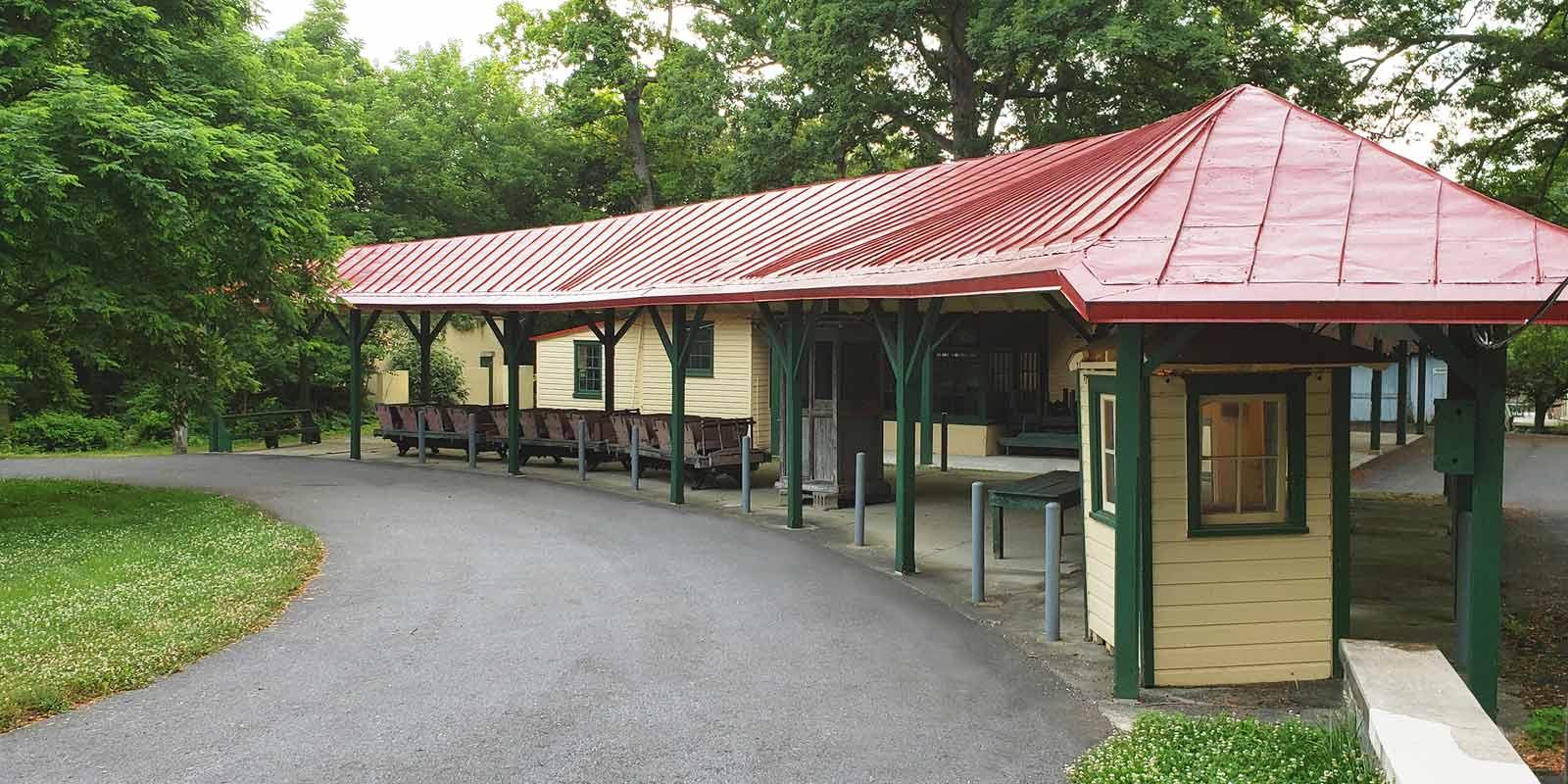The History of Rocky Springs Park
The park is closed to the public, but B&B guests can roam the grounds and enjoy the history and ambiance of the buildings and park-like atmosphere.
Rocky Springs Begins
The fascinating history of Rocky Springs Park dates back to 1855, when Michael Trissler - a butcher in Lancaster, Pennsylvania - purchased 102 acres of land south of Lancaster City. This land bordered the Conestoga River and contained a natural spring. Over the next several years, Trissler sold most of the land to neighboring farmers, keeping only 25 acres, which was called Rocky Springs.
He built a two-and-a-half-story brick hotel and opened the grounds to picnics. The hotel was operational from 1860-1876 and had several different innkeepers. Along with family and group picnics, swimming and boating in the Conestoga River became popular activities at Rocky Springs. Transportation to the park from Lancaster City at that time was by omnibus.
Rocky Springs Becomes Demuth Park
In 1882 Samuel Demuth purchased Rocky Springs from the Trissler estate. Demuth erected various buildings and planted shrubbery at the park. It became known as Demuth's Park for nearly a decade. In 1887 Demuth purchased an additional 14 acres to enlarge the park grounds.
After Demuth died in 1888, the park was operated by his heirs who piloted the first Lady Gay, a small steamboat that traveled the river taking passengers to the park. The steamer was about 65 to 75 feet long and is estimated to have carried 200 to 375 passengers. The locks and dams that were on the Conestoga River at that time made it navigable for boats of this size.
Rocky Springs Amusement Park is Born
In 1890, Demuth's estate leased the park to John B. Peoples, and in 1894, he opened Lancaster’s first amusement park - Rocky Springs Park. The park’s many amusements included a shooting gallery, tennis courts, kiddie swings, the cane game, and throwing baseballs at babies (not real ones)! There was a place to purchase refreshments and a resident photographer making tintypes.
People built new bathing houses and added sand on the beach along the Conestoga River. Rocky Springs Park rented bathing suits and canoes to the visitors. Hundreds of people were visiting the park by this point in time.
In 1896, the Demuth estate leased the park to Herman Griffiths and Emma Weiner (who was his wife’s nurse). John Peoples built Peoples’ Bathing Resort on the opposite side of the Conestoga River from Rocky Springs Park. He began operating a second Lady Gay steamboat to carry passengers from Conestoga Park to his Bathing Resort.
In 1899, major changes began when the property was sold to Thomas Rees of Pittsburgh. Herman Griffiths was kept on as park manager and his family lived in the Mansion House which was the former hotel. Two new steamboats were added to carry guests to the park – the Emma Belle and the Evelyn B. Under Griffiths's guidance, Rocky Springs Park flourished. Church organizations, businesses, families, and individuals flocked here to enjoy the summer months – holding camp meetings, picnics, and dances in pavilions – and to the bathing area by the river. Amusement rides including a steam-powered merry-go-round and a figure 8 roller coaster were added along with concessions, a ballroom, and a 2000-seat theatre. Trolley service from Lancaster City to Rocky Springs began in 1903, and the park drew thousands of people on weekends.
Swimming in the Conestoga River was starting to lose its appeal, and in 1921, Rocky Springs Park opened Crystal Pool. It was a tile-lined 80-foot x 140-foot spring water pool. It featured 2 diving boards, a wading pool and a bathhouse with 2000 private lockers.
From 1923-1924, the existing Dentzel Carousel was updated to a 3-row design w/ jumper mechanism.
In 1928, the park’s famous Wildcat Rollercoaster was built.
Rocky Springs Park Expands
Joe Figari began working at Rocky Springs Park running concessions as a young man. He built up a thriving business with his park concessions. He also owned the American Caramel Company in Lancaster at this time. In 1935, he purchased Rocky Springs Park and his family lived in the Mansion House. Joe’s employees made candy during the winter months and worked at the park in the summer. The park continued to expand adding a roller-skating rink, bowling lanes, ball fields and other attractions.
Rocky Springs Park Closes
As trolleys were being replaced by buses, service lines across Lancaster were shutting down. The one remaining trolley line—to Rocky Springs Park— was shut down in September 1947. Joe Figari died in 1965, and with the park in disrepair and hard to find, Rocky Springs Park closed in 1966. It sat empty for several years until it was purchased in the late 1970s. The three new owners fixed up Rocky Springs Park and reopened it in 1979, but attendance was slim and the park closed for good in 1980.
An auction was held in 1984, where rides, memorabilia and some park buildings were sold. Soon after, the east side of the park was sold for development.
In 2001, the remaining parkland was purchased by Sam and Elaine Stoltzfus and is now the setting for Rocky Springs Bed and Breakfast
For more than one hundred years, Rocky Springs Park was an important hub of social activity in Lancaster County. It provided a place for families and the community to come together and enjoy a fun escape from the demands of life. Young couples would go there on dates and many people met their future spouses there.
While much has changed since its beginning days, the essence of Rocky Springs remains. Guests can get away from the everyday routine and find rest and restoration in this tranquil location.






